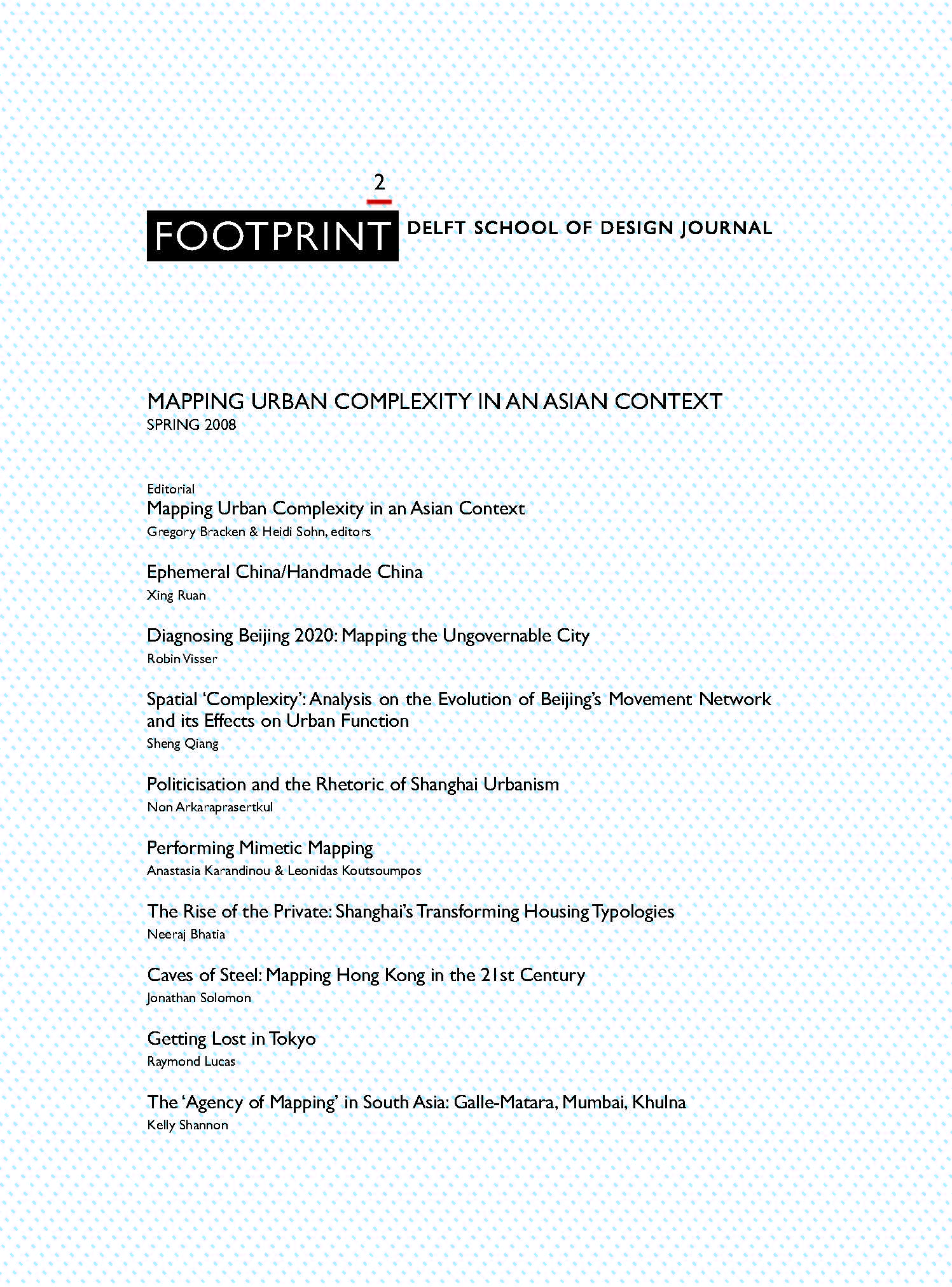Getting Lost in Tokyo
DOI:
https://doi.org/10.7480/footprint.2.1.680Abstract
This paper explores the potential for using alternative forms of inscriptive practice to describe the urban space of the Tokyo Subway. I begin with an account of the process of getting lost in Shinjuku Subway Station in the heart of Tokyo. This station represents a limit condition of place, being dense and complex beyond the powers of traditional architectural representation. The station is explored through serial translations, beginning with narrative, moving to a flowchart diagram, Laban dance notation, recurring motifs and archetypes, architectural drawing, photography, and cartography. As Claudia Brodsky Lacour and Tim Ingold describe, the form our inscriptive practices take are crucial to the ways in which we conceptualise those places. How much of the experience of a place is lost in the traditional inscriptive practices of the architect? This description of the urban space of the Tokyo subway forms the basis for an extended study exploring the description of this experience of place, and the power of such description to theorise space. The ultimate aim of this is to shift the focus of urban design away from geometric principles and towards the experiences that might be enjoyed in such places.
Downloads
Published
Issue
Section
License
- Authors retain copyright and grant the journal right of first publication with the work simultaneously licensed under a Creative Commons Attribution License that allows others to share the work with an acknowledgement of the work's authorship and initial publication in this journal.
- Authors are able to enter into separate, additional contractual arrangements for the non-exclusive distribution of the journal's published version of the work (e.g., post it to an institutional repository or publish it in a book), with an acknowledgement of its initial publication in this journal.





